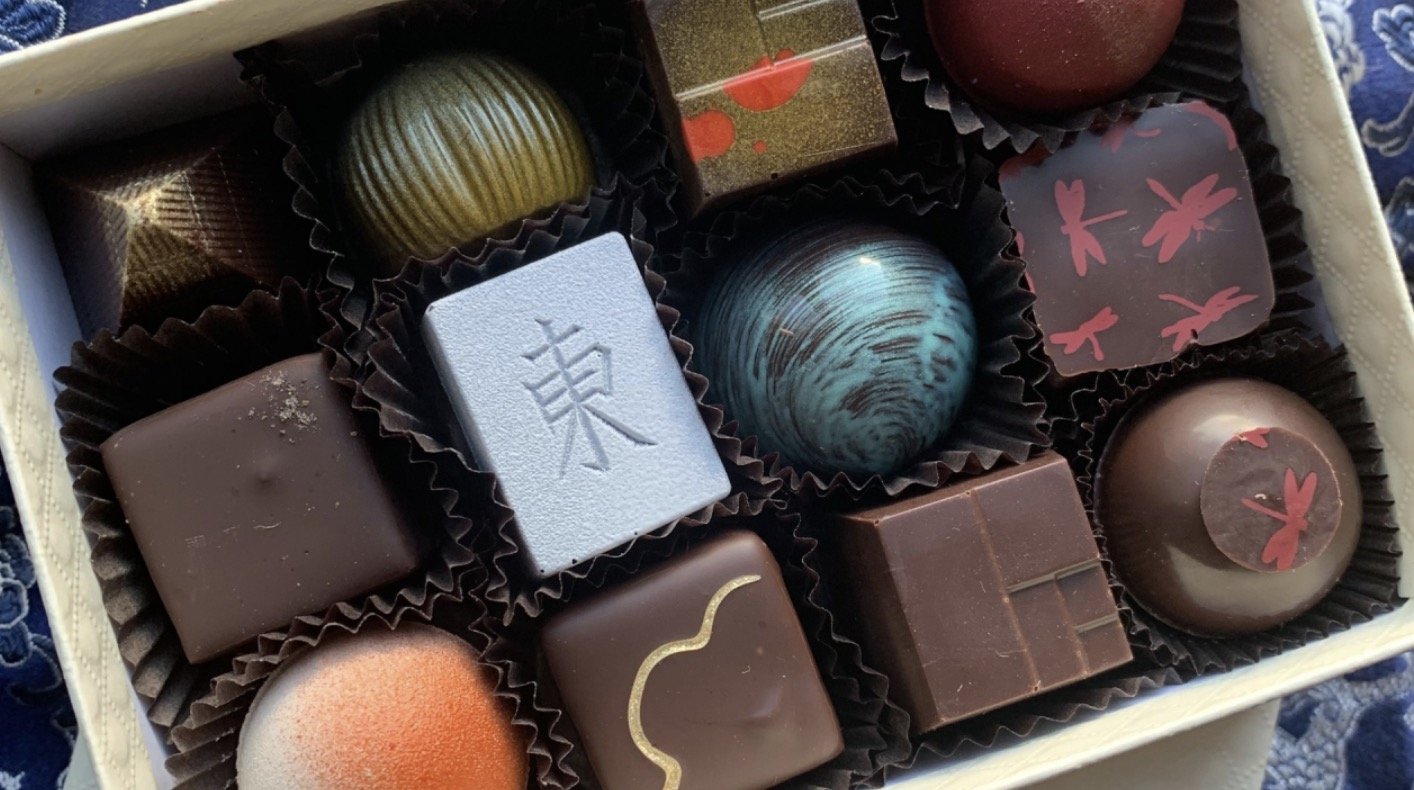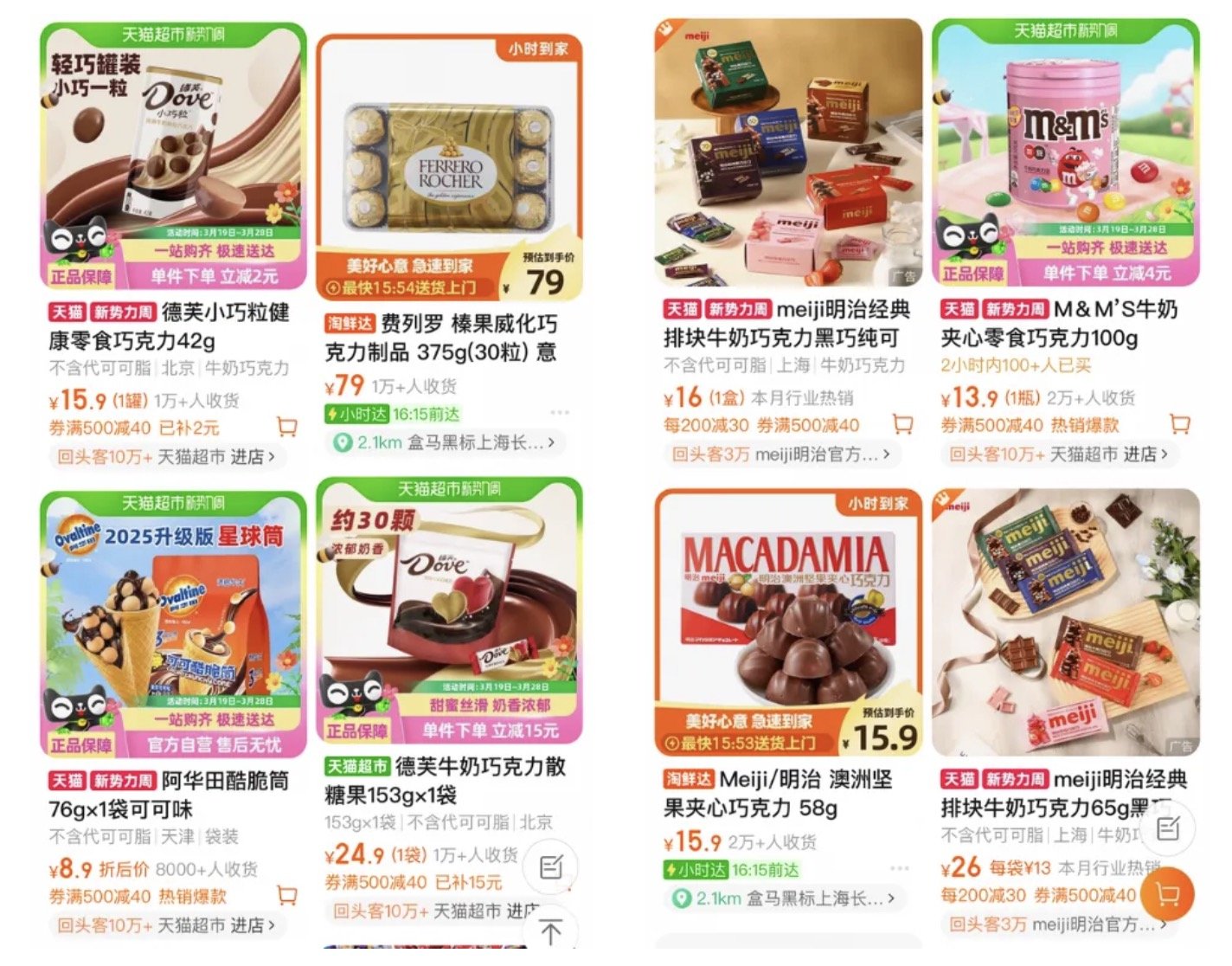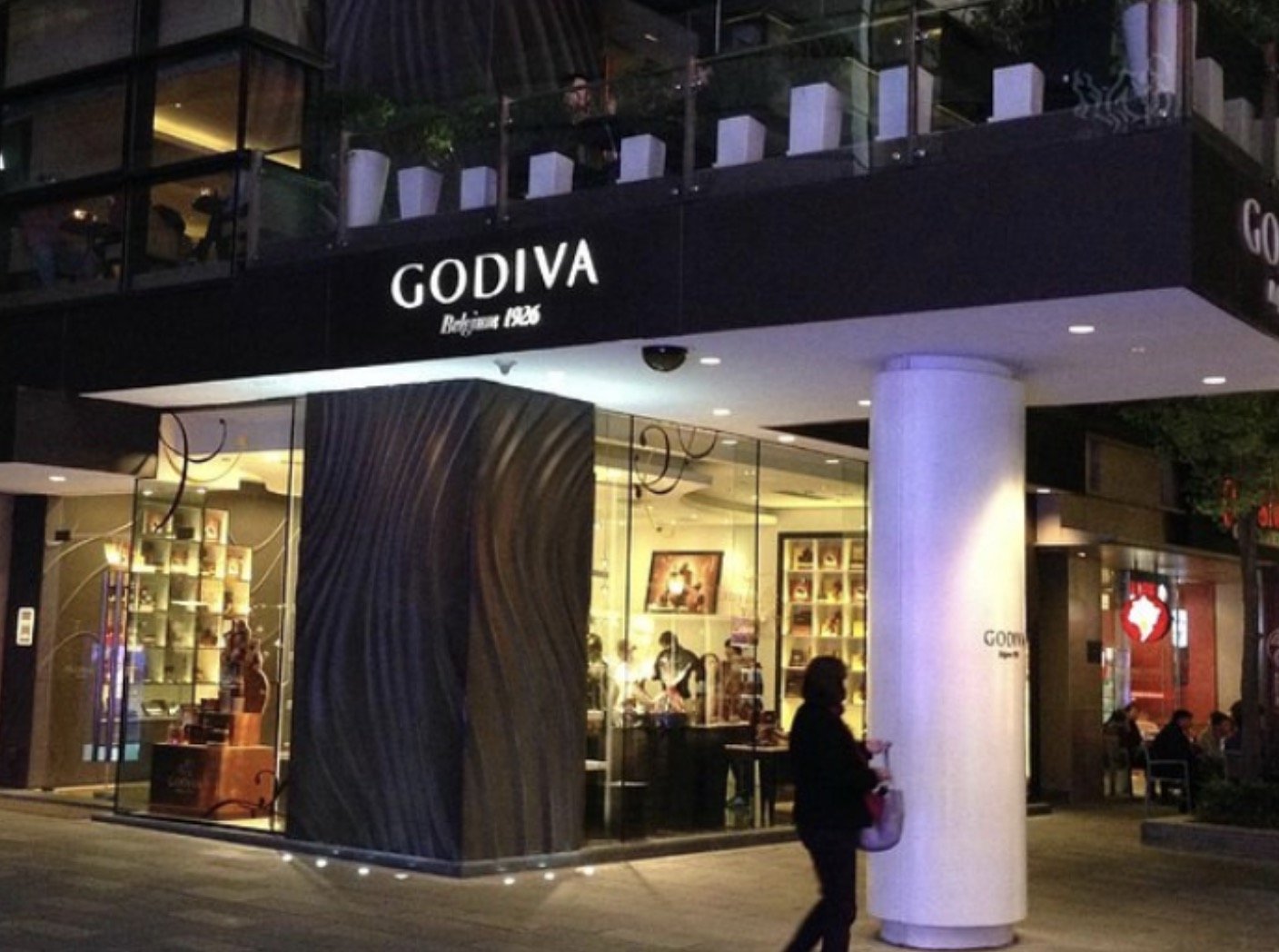China’s Confectionery and Chocolate Market
China's confectionery and chocolate market has grown significantly in recent years, driven by evolving consumer behavior, a growing middle class, and increasing demand for premium and health-conscious products. Western brands have become immensely popular in China, making it an appealing market for global confectionery and chocolate companies.
The confectionery and chocolate market in China has shown steady growth, with projections indicating that the trend will continue in the coming years. From, the market is expected to grow at a compound annual growth rate of about 4.3%, fueled by urbanization and rising disposable incomes among Chinese consumers. As of 2025, the market is valued at around €5.2 billion EUR, with expectations to reach a value of 6.4 billion EUR by 2030.
This graph shows the estimated Chinese chocolate & confectionery market value for the upcoming years. It is expected to reach a total value of 6.38 billion by 2030.
This growth is caused by several factors, such as the growing demand for premium chocolates, the growth of e-commerce in retail, and increased consumption during holidays like Chinese New Year and Valentine’s Day. As disposable income rises, Chinese consumers are becoming more able to purchase luxury and premium chocolate products, opening up opportunities for both international and local brands.
Consumer Behavior and Trends
Chinese consumers are starting to change their attitudes toward confectionery and chocolate products. Historically, Chinese snacks were more savory, with sweets being a niche category. When a Chinese person likes a sweet delicacy, they will compliment it by saying “bu tai tian de”, or in English “not too sweet”. But as Western food culture has become more integrated in Chinese society, chocolate and confectionery have grown in popularity, especially in urban centers where the middle class is expanding.
Key consumer trends include:
Premiumization — There is a growing demand for premium, high-quality chocolate, particularly varieties like dark chocolate and organic options. Health-conscious consumers are opting for chocolates with fewer additives and lower sugar content.
Gift-Giving — Gifting remains a common practice in China, and premium chocolates are often chosen as gifts, particularly during key holidays such as Chinese New Year, Valentine’s Day, and Christmas.
Local Flavors — Many Chinese consumers are interested in chocolates that blend Western techniques with local flavors, such as matcha, red bean, and even chili. Brands incorporating these regional flavors have a higher chance of resonating with local tastes. Matcha and black sesame, in particular, are associated with health benefits, making them attractive to consumers who want an easy snack with positive health benefits. Chili-infused chocolate and salted egg yolk variants satisfy Chinese consumers’ demand for bold, layered flavors, where sweetness is balanced with spiciness or umami.
Above you can see different chocolate variations. On the left are chocolates infused with chili flakes. On the right, we can see a matcha-flavored chocolate bar and a matcha-flavored chocolate inspired by the western “OREO”.
Price Sensitivity — While the demand for premium chocolates is growing, many consumers in lower-tier cities still purchase mass-market and mid-range brands due to their affordability. Online platforms are used to compare prices, making competitive pricing essential for success.
China vs. The West
Though the confectionery markets in both China and the West share similarities, key differences exist.
Consumption habits — differ. In the West, chocolate is often consumed daily as a treat, whereas in China, it is generally reserved for special occasions, gifts, and social events. This cultural distinction makes branding, packaging, and positioning particularly important for success in the Chinese market.
Retail channels — vary significantly as well. Western markets rely heavily on supermarkets, convenience stores, and specialty chocolate shops. Chinese convenience stores also have famous chocolates available, such as, Snickers, Mars, etc. What is unique in China, however, e-commerce and social commerce platforms such as Tmall, JD.com, and WeChat play a dominant role in sales. Special online shopping events, such as Singles' Day, also provide significant sales opportunities for confectionery brands.
Chocolates are sold in batches along with special promotions through online e-commerce platforms such as Tmall and JD. Stores often have same-day delivery for their products.
Health-conscious trends — are apparent in both markets, but the specifics differ. In the West, many consumers seek lower-sugar or organic chocolates. In China, the demand for healthier options extends to chocolates that are lower in sugar, dairy-free, or incorporate functional ingredients like goji berries or probiotics.
Brand perception — plays a role in how chocolates are marketed in each region. In China, foreign brands, particularly those from Switzerland, Belgium, and Japan, are seen as high-quality and luxurious. Meanwhile, in the West, domestic brands have strong consumer loyalty and dominate the market.
Competitive Landscape
Leading International Brands:
Ferrero Rocher: Ferrero has become synonymous with premium chocolate gifting in China. The brand has capitalized on Chinese consumers’ preference for luxury packaging and gift-giving traditions, making its gold-wrapped chocolates a popular choice for holidays like Chinese New Year and Valentine’s Day. Ferrero has also expanded its product range to include locally inspired flavors, such as matcha-filled chocolates.
Mars (Dove, Snickers, M&M’s): Mars currently has the strongest presence in China’s mass-market chocolate segment in China, with Dove being one of the most recognized chocolate brands. Dove has successfully marketed itself as a high-quality yet accessible brand, often using aspirational and emotional storytelling in its advertisements. Mars also promotes Snickers as an energy-boosting snack, appealing to younger consumers who seek quick, on-the-go indulgence.
The picture shows "Snickers" on the shelves of a Chinese convenience store. The text underneath says but 2 pieces for 8 Yuan.
Nestlé: Known for KitKat and other confectionery products, Nestlé has adapted its offerings to cater to Chinese tastes. KitKat, has launched flavors inspired by local ingredients, such as green tea and red bean. Nestlé has also focused on healthier chocolate variants to align with the growing trend of health-conscious consumption in China. These variants include more options with dark chocolate (known for less sugar and more antioxidants), chocolates with less sugar or alternative sweeteners like stevia, or chocolates enriched with vitamins, minerals, probiotics, or traditional Chinese ingredients (like goji berries) to appeal to health-conscious consumers.
Hershey’s: Hershey’s entered the Chinese market aggressively but initially struggled due to a lack of localization. Compared to Mars (which entered earlier with its “Dove” brand), the company entered the market relatively late. This made it difficult for Hershey’s to come up to speed. To address these issues, Hershey later acquired the Chinese chocolate brand Shanghai Golden Monkey in 2014 to strengthen its local presence.
Leading Domestic Brands:
Holiland: Primarily known for its bakery products, Holiland has been trending on both Western and Chinese social media platforms. The company is known for its trendy marketing, often collaborating with influencers and using stylish, modern packaging. Holiland markets itself as a premium brand and operates in a relatively high price bracket compared to competitors. Even though the company is mainly famous for its high-quality cakes and pastries, it has also expanded into premium chocolates and confectionery, making use of its brand reputation and strong retail presence to capture a share of the chocolate gifting market in China.
The picture shows one of the most visited Holiland stores in Shanghai.
Hsu Fu Chi: Established in the confectionery market, the company has expanded its product portfolio to include chocolates. Founded in 1992 in Dongguan, Guangdong Province, it has become a household name in China. In 2011, Nestlé acquired a 60% stake, aiding in its expansion and product development. The company enjoys combining traditional Chinese ingredients like red bean, black sesame, matcha, taro, and mung bean.
Although Hsu Fu Chi doesn't specialize in chocolate, they offer a wide variety of sweets to the market.
LeConte: Known for its traditional Chinese desserts, LeConte has also entered the premium chocolate market. The brand’s products include ingredients such as matcha and red bean, appealing to both traditional and modern Chinese tastes.
The picture showcases how the company sells chocolate on the e-commerce platform Taobao. Here they offer many different options, and most of them will be delivered on the day of ordering.
Afeción (爱菲诗巧克力): Afición Chocolates is a Chinese chocolate brand established in 2013. The brand's name, "Afición," is derived from Latin, meaning "love," reflecting their passion for chocolate. The brand continues to focus on producing high-quality chocolates, and has become well-known in the wedding industry, by creating specialized chocolates. Afición is one of the smaller domestic brands that has been able to operate successfully.
The packaging in which Afición sells their products in China.
Product Distribution
1. Supermarkets and Hypermarkets
Major retail chains such as Carrefour, Walmart, RT-Mart, and Yonghui remain key distribution points for chocolate, especially for mass-market brands like Dove, Snickers, and Nestlé. These stores attract middle-class consumers who seek affordability and convenience. Chocolate products are typically displayed near checkout counters or in dedicated confectionery aisles to encourage impulse purchases.
2. Convenience Stores and Local Retailers
Convenience stores such as FamilyMart, 7-Eleven, and Lawson play a crucial role in chocolate sales, particularly for smaller, on-the-go packaging. Commuters and younger consumers frequently purchase chocolates as quick snacks on the go. Additionally, traditional mom-and-pop stores in lower-tier cities still account for a significant portion of sales, especially for domestic brands like Hsu Fu Chi.
Both Lawson and FamilyMart are massively popular convenience store chains that have thousands of stores around China. To say that you can find one of these stores on every street corner is not an exaggeration.
3. Specialty Chocolate Boutiques and High-End Retail
Luxury chocolate brands such as Godiva, Venchi, and Lindt have established standalone boutiques in high-end shopping malls across major cities like Shanghai, Beijing, and Guangzhou. These boutiques offer premium experiences, including in-store tasting sessions and customized gift packaging, appealing to consumers seeking high-end chocolates for gifting and self-indulgence.
The Godiva flagship store in Shanghai's Xintandi district. The district is a famous hub for its residential, office, retail, entertainment and cultural properties in the heart of the city.
4. E-Commerce and Social Commerce
Online shopping plays a significant role in China's chocolate market, with platforms like Tmall, JD.com, and Pinduoduo offering a wide variety of chocolate products. E-commerce allows brands to reach consumers in both urban and rural areas, providing promotions, limited-edition products, and direct-to-consumer marketing campaigns. Brands use these platforms to offer special deals. Customers can frequently receive their chocolate on the same day, meeting their needs almost instantly. This contrasts with the West, where customers typically wait at least a day or longer for delivery.
Opportunities for Foreign Brands
Product Diversification: Introducing innovative flavors, textures, and packaging—such as limited-edition festival-themed assortments—can enhance appeal. Regional flavors like matcha, red bean, or spicy chocolate can cater to local tastes, while premium ingredients and artisanal craftsmanship can target the growing luxury segment.
Health and Wellness Trends: Developing chocolates with reduced sugar content, functional ingredients (such as added vitamins, probiotics, or collagen), or dairy-free and plant-based alternatives can align with the rising health-conscious consumer base. Additionally, incorporating traditional Chinese medicinal ingredients like goji berries or ginseng can differentiate products in the market.
Cultural Marketing: Tailoring marketing strategies to align with Chinese traditions, festivals, and influencer collaborations for enhanced brand engagement. Leveraging key shopping events like Singles’ Day (11.11), Chinese New Year, and Qixi Festival with exclusive offerings and localized branding can drive significant sales. Collaborating with local influencers (KOLs) and livestreaming platforms such as Douyin and Xiaohongshu can boost visibility and credibility among younger consumers.
E-commerce Presence: In China's highly digitalized retail, maintaining a strong online presence on major platforms like Tmall, JD.com, and Pinduoduo is crucial. AI-driven recommendations, personalized promotions, and interactive campaigns can boost consumer engagement. Offline retail partnerships with supermarkets, boutique confectionery stores, and vending machines in high-traffic areas can effectively complement digital sales strategies.











